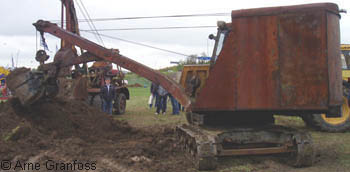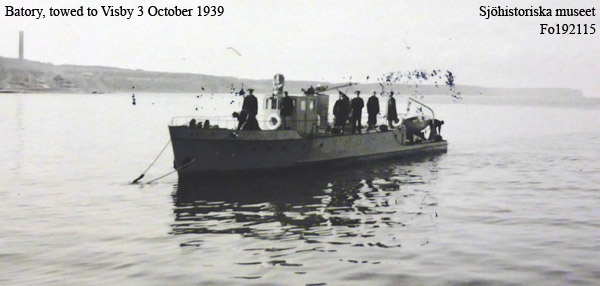Early refugees in Sweden

 UNDER CONSTRUCTION Version 0.41
UNDER CONSTRUCTION Version 0.41
|
Sweden in World War II - across borders
|
 |
![]()
![]()
A smaller number of jewish children were taken care of in Sweden, especially after "the crystal night" in 1938. [s55]
When the war began in 1939, only 3000 jews had been allowed to stay in Sweden. [s41]
![]()
After the German attack on Poland 1 September 1939, the Polish Navy surrendered on 13 September. Except three destroyers that sailed to Britain and some submarines that sailed to Sweden. [s19]
The first Polish submarine that arrived in Sweden had a leaking exhaust pipe and took in water. The crew had to abandon their journey to Britain, and on 17 September Sep arrived in Sweden. [s59]

In the morning of the 18th Rys arrived, with too little fuel for a trip to Britain and some minor damages. On 25th Zbik came to Sweden, with a tower hatch that leaked in high sea. The submarines were disarmed, and the crew interned in Sweden. Later 29 of them were allowed by Sweden to fly to Britain in a British bomber. The rest remained in Sweden, and after the war half of them chose to live in Sweden. [s59]
A few 'extra skilled' refugees also came to Sweden. The Polish submarine Orzel had to sail to the neutral Estonia on 14 September 1939, with a sick man and a faulty engine. She was interned after a decision in the Estonian government. The Polish legation removed all secret equipment. One night the crew managed to run away with the submarine, and with 'sea charts' drawn from the memory of the navigation officer and with the help of a Swedish list over Swedish lighthouses. Close to the Swedish island Gotland the Estonians who had been aboard the submarine were sent ashore in a rubber boat. (On 8 April 1940 Orzel was one of the guards for the British ships who laid minefields at the Norwegian coast, and that day Orzel sank the German troop carrier Rio de Janeiro near Lillesund.) [s59]
The submarine crews remained in Sweden during the war. Then most of them returned to Poland with the submarines. [s77]
![]()
On 13 September 1939 some Polish pilots were ordered to evacuate two RWD-13 to Sweden. The first plane landed on Gotland the same afternoon with two persons. One was in uniform and was interned, the other who had civilian clothes was released after a visit to the Swedish police. He left Sweden on 2 October, and in Britain he joined RAF as a pilot. The plane was used by the Swedish air force during the war. [s77]

![]()
On 9 April 1940 the Swedish newspaper Arbetarbladet ('Workers newspaper') published an article about the Swedish detention camps that had been established for not wanted foreigners. [s06]
![]()
After the German attack on Denmark and Norway, Folke Bernadotte (later known for the white buses operation) was assigned to establish a military detention detail. It should handle military from warfaring nations who had crossed the border to Sweden by one reason or another. According to international law these should be detained in Sweden. [s50]
He had just begun work with support for Finland that was attacked by the Soviet Union, when the Winter War ended. During his new assignment a number of detention camps were established in Sweden. [s67]
![]()
The immigration restrictions for jews and other groups were less hard from the autumn of 1941, and after 1942 everyone who managed to get to Sweden were allowed to come into Sweden. [s55]
![]()
2019-04-07. www.granfoss.se. Text/pictures: Arne Granfoss